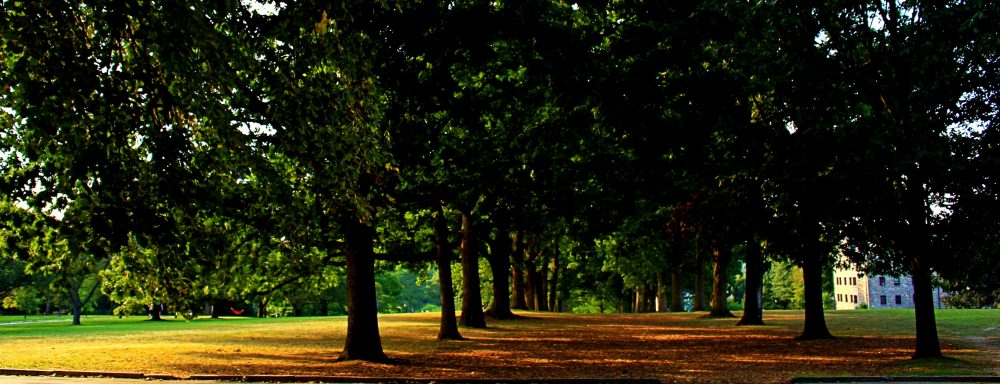
“All food produced in Corsica has strong, characteristic flavors: the cheeses that burn one’s tongue, the olive oil with an intriguing, slightly musty taste, the honey, at once sweet and bitter.”
—Dorothy Carrington, The Dream-Hunters of Corsica
It is impossible to study and write about Corsica without thinking of its cuisine. Several writers describe the home-cured boar salami hanging from the rafters in Corsican homes. And for good reason the charcuterie is legendary—the cured meats have been raised feasting on the maquis, the dense scrubland of fragrant herbs. Yet the famous Corsican boars also fed on another treat, the châtaigne or chestnuts, brought to Corsica by the Genoese in the thirteenth century.
 Corsican chestnuts are common in Corsican cooking and find their way into both sweet and savory dishes. One could consume a chestnut polenta and follow it with a creamy chestnut pudding. Another dish featuring the nut is called canistrelli.
Corsican chestnuts are common in Corsican cooking and find their way into both sweet and savory dishes. One could consume a chestnut polenta and follow it with a creamy chestnut pudding. Another dish featuring the nut is called canistrelli.
I find baking helps me relieve stress and writer’s block, and fills the kitchen with sweet aromas. I have recently taken to baking canistrelli, a type of Corsican breakfast cookie much like the Italian biscotti. Like biscotti, canistrelli are baked twice, and the second baking gives them crispy brown edges and a dry, sugary consistency. However, unlike in the word “biscotti,” the final i in canistrelli is not pronounced—the word sounds more like canistrelle. One of my professors, who kindly talked with me at length about the island and its turbulent political culture, also noted the nuances of pronunciation in the Corsican language.
Canistrelli are often made with chestnuts or chestnut flour. However, in lieu of Corsican chestnuts, which might be a bit difficult to come by at the local supermarket, hazelnuts prove just as tasty. The finished product is tastiest when dunked in an espresso, which both softens the cookie and accentuates the roasted hazelnuts peppered throughout.

After some trial and error, here is my canistrelli recipe:
1 stick of butter (unsalted is preferable)
1 1/2 cups flour (have another half cup for kneading and flouring surfaces)
pinch of salt
vanilla (a capful or so)
1/8 cup chopped hazelnuts, or golden raisins and orange zest
3/4 cup sugar
a bit of yeast
2 eggs
an egg yolk to brush on top for a shiny browned crust
Heat the oven to 380º F.
Let the butter sit out and soften before combining it with the eggs and vanilla. Mix the flour, salt, sugar, and yeast in a separate bowl. Slowly incorporate the contents of the second bowl to the first, a half cup at a time. The consistency should be fairly sticky and wet.
At this point I split the dough in half to accommodate the hazelnut canistrelli and the orange and raisin canistrelli. Turn out the dough onto a floured surface and knead the hazelnuts into one section. (I think pine nuts or roasted almonds could be quite a tasty addition, too.) In the other dough section I have been adding a couple of teaspoons of orange zest and raisins or cranberries.
 Do not over-knead the dough. It should be much stickier and softer than bread dough. Add only enough flour to fully incorporate all the nuts and fruits. Gently roll out the dough into oblong shapes. They should look like mini baguettes. Press them down slightly. Then coat them with the egg yolk and set the two canistrelli rolls on baking sheet in the oven for about 25 minutes.
Do not over-knead the dough. It should be much stickier and softer than bread dough. Add only enough flour to fully incorporate all the nuts and fruits. Gently roll out the dough into oblong shapes. They should look like mini baguettes. Press them down slightly. Then coat them with the egg yolk and set the two canistrelli rolls on baking sheet in the oven for about 25 minutes.
After 25 minutes, remove them and, working quickly while they are still soft, take a very sharp knife and cut at a diagonal into 1/2 inch strips. The more dramatic the diagonal, the longer your canistrelli are going to be. Place the canistrelli back on the cookie sheet and return to the oven for 6–8 minutes, before turning them all to the other side for another 6–8 minutes. They should be a chestnut brown and snap instead of crumble. Let them cool outside the oven. Then brew yourself a fresh espresso to savor with the cookies.
Like biscotti, they are best stored in a paper bag.
Bon appétit!


Thanks Hallie, first picture remind me about irresistible need to get some snacks.
Any signs about Napoleon there? Looks like he was originally from Corsica
Hi! Hope you located some delicious snacks 🙂
Absolutely! In Ajaccio the capital of Corsica, and birth city of Napoleon, he’s quite deified. There’s a quite delectable ‘Gelateria Bonaparte’ in the city center as I remember…